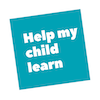Weighted and Compression Clothing Can Calm Your Child
.Many parents swear by one or more pieces of weighted or compression clothing that can calm their child.
Weighted clothing is used for calming, improved focus, increased body awareness (proprioception), reduced hyperactivity, and improved balance. Weighted products give proprioceptive input, which can cause the brain to release neurotransmitters like serotonin. Neurotransmitters released by the brain have naturally calming effects for people experiencing anxiety, stress, or sensory processing issues.
Will it work for your child? Possibly.
- Does your child calm down and focus better if they receive pressure?
- Does your child like to bury themselves under pillows, have you squeeze them in play?
Either of these things might indicate that compression clothing can help calm. As we explain in our Deep Touch Pressure description, firm, consistent pressure can be helpful for children with sensory processing issues, with ADHD, or even with anxiety. There’s really no way to know until you try.
A few years ago, the only way to get compression was to either use a weighted lap pad during school, or to wear an old-fashioned compression vest. The trouble is that some of those vests looked peculiar, leaving our children open to bullying. But things have changed.
There are now simple pieces of clothing that your child can use beneath or on top of their clothing every day for calming. These pieces of clothing are made from the same type of fabric as a beloved bathing suit. They hug your child, giving a little extra tactile stimulation throughout the day. As a bonus, if you’re not sure whether or not your child would benefit from using deep pressure or compression clothing, you can purchase just one piece (for not much money) and test it out.
Also take a look at the Miracle Belt, which can be worn on top of any clothing, and which gives proprioceptive input with less weight, since it’s focused on the body’s core.
As Amazon Associates, we earn when you purchase qualifying purchases from Amazon
Weighted Vest
Your child can wear a vest on the outside of their clothing to add proprioceptive input. The vest isn’t gorgeous, but it looks pretty much like a regular vest, and can go on over almost any clothing.
This vest by ZooVaa is designed to look just like regular clothing. It allows you to add weights to adjust the pressure your child feels.
Sensory Outfit
Sensory training is real. It’s not just used to help children develop and integrate their senses. It’s also used to help athletes develop their senses and strengthen their ability in a sport. This full sensory outfit is the same sort used by athletes—and it looks a little super-heroish, if we do say so ourselves.
By LNJLVI, for both boys and girls, this two-piece set comes in a bunch of different colors, including cool green.
Compression T-shirts
A compression t-shirt looks just like an ordinary t-shirt. It’s made of nylon and spandex and gives your child a hug when they wear it.
Here’s one by Kozie, which makes all sorts of compression clothing.
This invisible t-shirt by SmartKids gives the same sort of hug but has a lower neck and a tank top. Your child can wear it invisibly underneath other clothing. SmartKids also makes seamless underpants, and compression “bralettes” for young girls.
A sensory t-shirt can look even better if it looks like a superhero shirt! Here’s a great deep pressure superhero undershirt by SmartKnitKids.
Weighted Hats
You heard that right. Some children respond well to a weighted hat. ZooVaa makes a weighted baseball hat for ages 3 through 8. This cotton hat comes with two two 1/4-pound weights and two 1/8-pound weights that you can add or remove as needed. The weights are in nylon bags, and the hat has Velcro straps that keep the weights enclosed and secure during the entire time that the hat is worn. You can adjust the hat to fit heads between 16 and 21 inches.
Aunt Sandy’s makes a weighted winter hat specifically for compression/sensory therapy. The hats provide light pressure, with approximately a pound of Polly pellets. Hats are all fleece, but the dinosaur print is Jersey knit. The hats can be washed and dried.
Weighted Miracle Belt
Not exactly clothing, although it can slip on over anything, the Miracle Belt is a safe, comfortable foam belt that your child just clips around their waist. A one-pound Miracle Belt has no removable weights or pouches, and is made for children who weigh between 15 and 25 pounds.
This type of belt was designed with the help of the Kidspot pediatric therapy clinic. During testing the clinic discovered that only 4 to 7% of a child’s weight was necessary to provide effective proprioceptive feedback. Because the weight of the belt is distributed around the core of the body, experts say that less weight is needed than other traditional weighted therapy vests and products. Experts found that the Miracle Belt is good for both younger children, and for teenagers.
The Miracle Belt comes with a book about it, for baseball fans, called Playing Catch with Destiny: How the Miracle Belt Changes Lives. Michael Williamsen is a professional baseball player who discovered the benefits of a weight belt for stimulating the proprioception of children with sensory processing disorder. (Just to be clear, there are benefits from any type of garment or movement that stimulates proprioception. It’s not limited to the Miracle Belt.) This is a baseball book, and then in Chapters 19 and 20, it talks about how Williamsen and his nonprofit worked with the Kidspot pediatric clinic and the creators of the Miracle Belt to refine and use the belt to help many children.
Many mothers talk about how their husbands don’t always believe that a child really does have a problem with sense development. Some fathers even punish children for sensory-related meltdowns. This book is a great way to help a sports fan understand a little more about a child with sensory challenges.
For more information about proprioception, see our post called What Makes Your Kid Squirmy? It Might be Proprioception.
If your child is having trouble with sensory modulation, you can also take a look at our #BigChecklist, and at one of the sensory integration checklists in our collection.

















